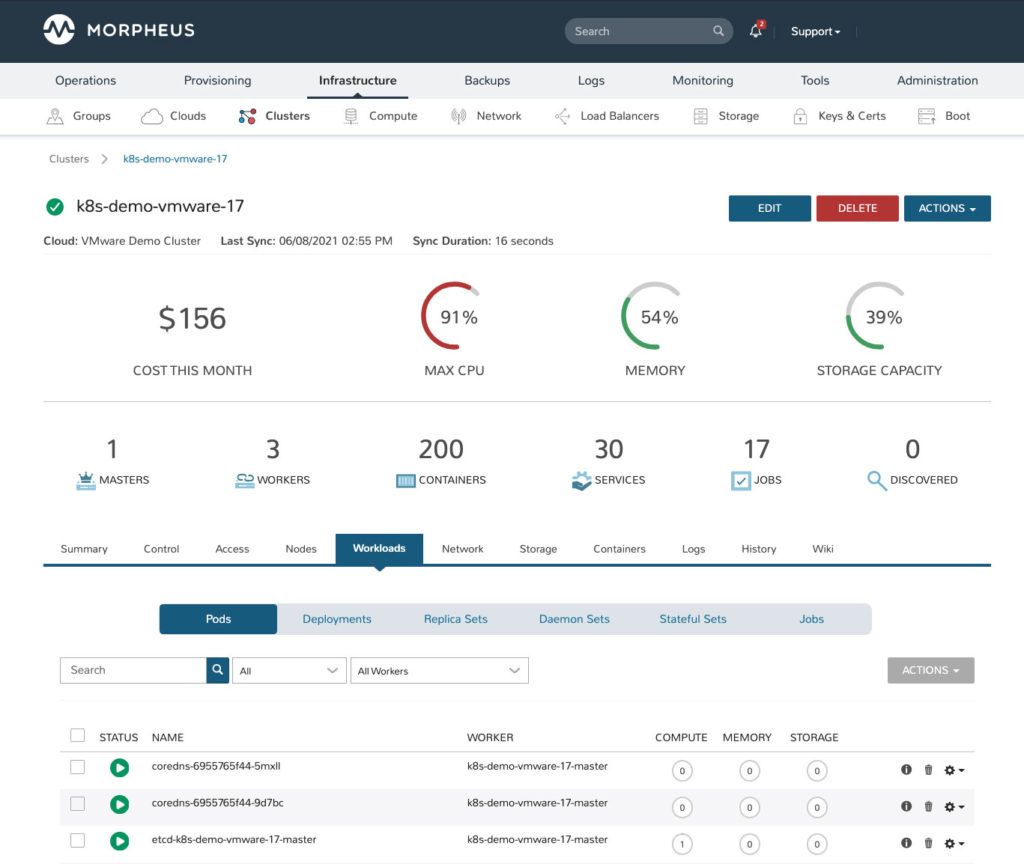Morpheus Data Extends Reach into Kubernetes
Morpheus Data has updated its platform for managing hybrid cloud computing environments to add deeper support for Kubernetes platforms alongside traditional monolithic applications.
As part of that effort, Morpheus is also updating the distribution of Kubernetes it makes available to support version 1.20 as well as clusters running other distributions of Kubernetes deployed in the cloud and on-premises IT environments.
Morpheus Data is also making it possible to consolidate the management of dozens of Kubernetes objects for cluster access, nodes, workloads, networking and storage in addition to adding the ability to install complementary tools such as Prometheus, Grafana, Istio and others with a single click.
Version 5.3.1 also extends support for open source Terraform tools to advantage of Terraform Instance Types. The platform already supports infrastructure-as-code tools from Amazon Web Services and Microsoft along with Ansible, Chef, Puppet and other automation platforms. Morpheus Data is also making available an instance of Terraform that can be deployed on-premises and cloud environments.
At the same time, the company is expanding its integration with VMware and Google Cloud Platform (GCP) in addition to making it easier to customize the Morpheus user interface and add reporting plug-ins. Google Cloud Platform (GCP) enhancements include more flexible region scoping plus making it easier to create and manage projects, security groups, and networking objects. The VMware update adds support for NSX-V to NSX-T network virtualization software.
Brad Parks, chief marketing officer for Morpheus Data, said that as IT organizations look to centralize the management of highly distributed IT environments they need to include container platforms to reduce the total cost of IT.
In fact, as IT organizations look to strike a balance between centralizing the management of IT and enabling developers to deploy applications anywhere, adoption of the Morpheus platform grew 70% in 2020.
It’s not clear to what degree IT organizations are moving to centralize the management of IT environments, however, as organizations continue to roll out additional applications, the pressure to reduce the cost of managing those environments increases. The challenge organizations face is that as each additional platform is added to an IT environment, the total cost of managing IT increases as additional consoles that need to be staffed by specialists increases.
Of course, not every IT organization has direct control over every IT platform being employed. Various lines of business tend to deploy applications using IT specialists that they have either hired or contracted. Eventually, however, the size and scope of those efforts reaches a level that often results in responsibility for managing them being shifted to a centralized IT team.
Regardless of how IT is managed, the overall environment is becoming more complex, in no small part because of the addition of Kubernetes. Arguably, Kubernetes is one of the most complex, yet powerful, IT platforms to find its way into enterprise IT environments in recent memory. It also affords IT teams a unique opportunity to standardize the management of Kubernetes clusters running on multiple platforms using a standard set of application programming interfaces (APIs). The challenge now is figuring out how to manage all those Kubernetes clusters alongside all the legacy platforms that don’t appear to be fading away any time soon.



